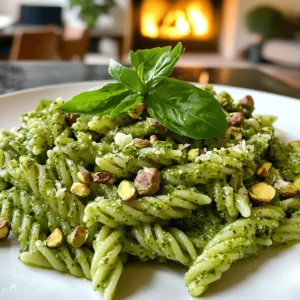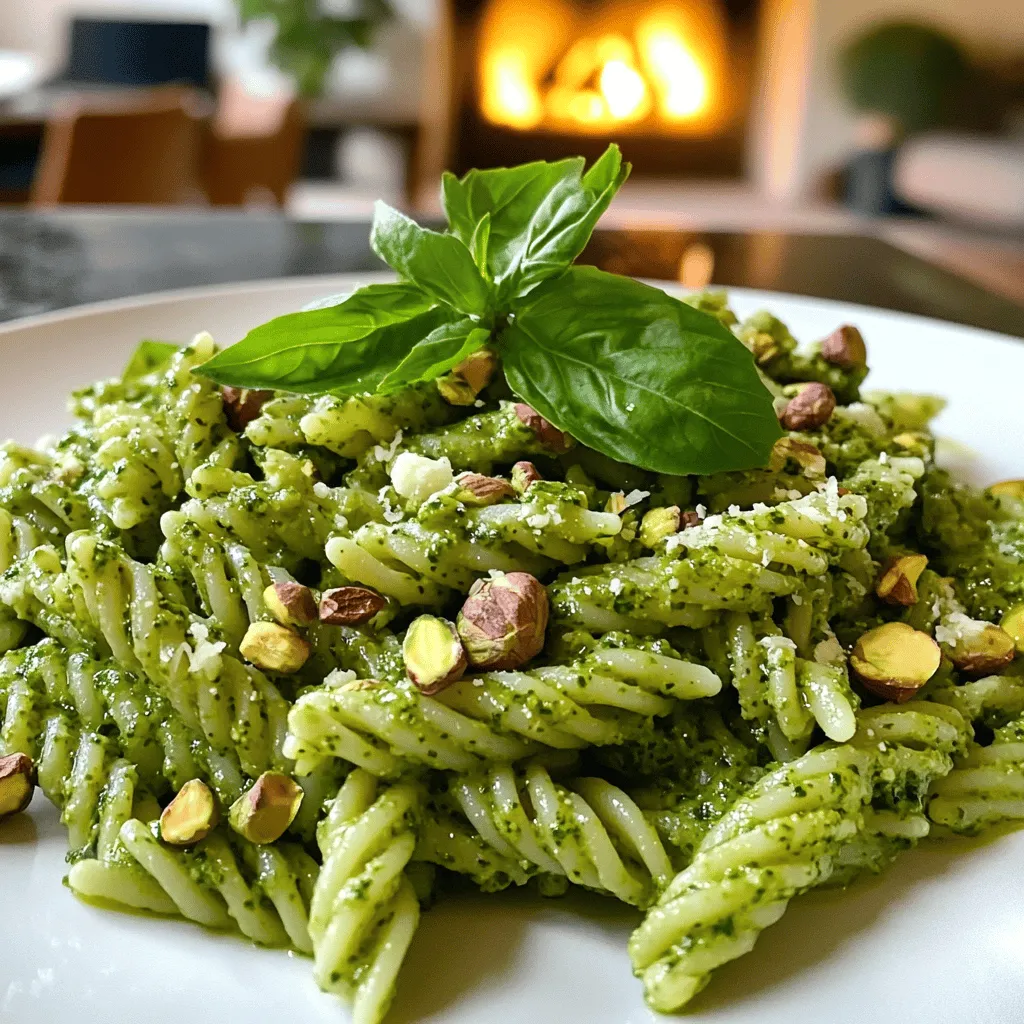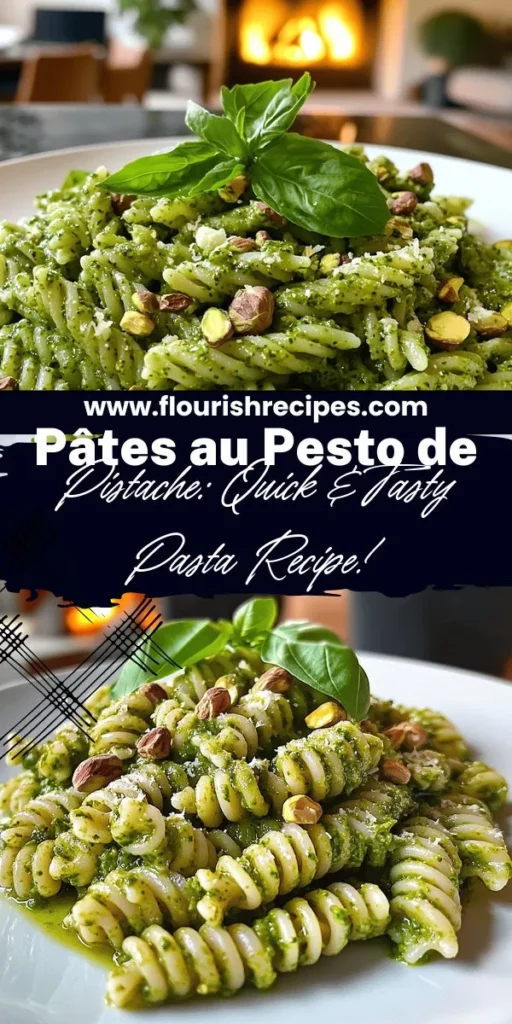Looking for a quick and tasty dinner idea? Pâtes au Pesto de Pistache is not just delicious; it’s also simple to make! With fresh ingredients and a rich flavor from pistachios, this dish will impress your family. I’ll guide you through the key ingredients, easy steps, and creative tips to make this meal special. Let’s dive into this delightful recipe and elevate your pasta night!
What are the Key Ingredients for Pâtes au Pesto de Pistache?
The key ingredients for pâtes au pesto de pistache make this dish special. First, you need fresh pasta. I like fusilli or penne. These shapes hold the sauce well.
Next, get shelled pistachios. They give a rich, nutty flavor. You can use salted or unsalted, but unsalted works best. Fresh basil is a must. It adds a bright taste that lifts the dish.
Garlic brings depth. Use two cloves, minced, for the best flavor. Grated Pecorino Romano cheese adds a salty kick. Extra virgin olive oil binds everything together. It makes the pesto smooth and creamy.
Lastly, add lemon juice. It brightens the flavors and gives a nice zing. You can also sprinkle salt and pepper to taste.
When you choose these ingredients, focus on their quality. Fresh ingredients always elevate the dish. For a full recipe, check the details above.
Now, let’s explore how each ingredient affects the taste and texture of your pesto.
How Do You Make Pâtes au Pesto de Pistache Step by Step?
To make this dish, start with the pesto sauce. First, gather your ingredients: shelled pistachios, fresh basil, garlic, Pecorino Romano cheese, olive oil, and lemon juice.
What Are the Essential Steps to Prepare the Pesto Sauce?
To make the pesto, place the pistachios, basil, and garlic in a food processor. Pulse until the mixture is finely chopped. Then, add the cheese and pulse again. Next, slowly drizzle in the olive oil while the processor runs. This helps create a smooth sauce. Finally, add lemon juice, salt, and pepper to taste. Blend until it’s creamy and well-mixed. This easy method makes a delicious pesto.
How Do You Cook Pasta to Achieve the Perfect Al Dente Texture?
Now, let’s cook the pasta. Bring a large pot of salted water to a boil. Add your pasta, like fusilli or penne. Check the package for cooking time. Aim for about 8 to 10 minutes. You want the pasta firm but not hard. To check, taste it a minute before the time is up. If it’s firm but soft, it’s ready. Save one cup of the pasta cooking water for later.
What Is the Best Way to Combine Pasta and Pesto for Maximum Flavor?
After draining the pasta, return it to the pot. Add the pesto sauce and a bit of the saved pasta water. Stir well to coat the pasta evenly. The water helps to thin the sauce if needed. Serve hot, and feel free to add more cheese or extra pistachios for a nice touch. This method ensures your dish is full of flavor. You can find the full recipe with more details on how to perfect this dish. Enjoy your creation!
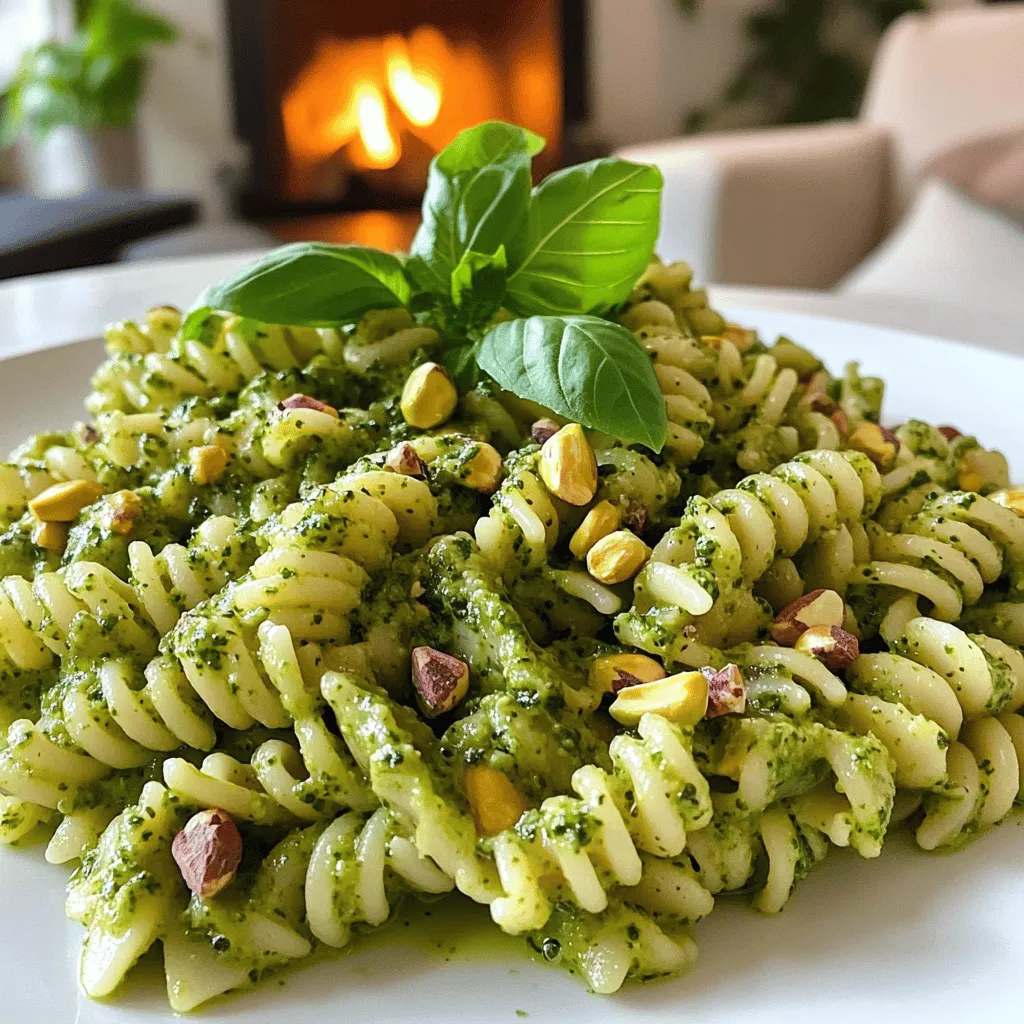
What Are Some Creative Variations of Pesto and Pasta Dishes?
Pesto is not just for basil. You can change nuts for fun flavors. Try walnuts, almonds, or even sunflower seeds. Each nut gives a new taste. Experiment to see what you like best.
For pasta, mix it with unique pairings. Use whole wheat or gluten-free pasta. These options add texture and flavor. You can also add roasted veggies, like bell peppers or zucchini. They bring color and nutrients.
Need a fast meal? Pesto is perfect for busy weeknights. You can whip it up in minutes. Just blend nuts, basil, and olive oil. Cook any pasta and mix in the pesto. You can find the full recipe at Pâtes au Pesto de Pistache.
Add protein like chicken or shrimp for a complete meal. Throw in some cherry tomatoes for freshness. These small changes make each dish special. Enjoy your culinary adventure!
What Are the Best Serving Suggestions for Pâtes au Pesto de Pistache?
Pâtes au Pesto de Pistache is a delightfully rich dish. To make it even better, you can pair it with tasty sides and garnishes.
What Kind of Sides Complement Pasta with Pistachio Pesto?
When serving Pâtes au Pesto de Pistache, think about sides that balance the dish. A simple green salad works well. Use fresh greens, tomatoes, and a light vinaigrette. You might also enjoy warm, crusty bread. This adds a nice texture and helps soak up the pesto.
If you want something heartier, roasted vegetables can be great too. Try zucchini, bell peppers, or asparagus. Roasting brings out their natural sweetness. Serve them alongside your pasta for a colorful plate.
Which Garnishes Can Elevate the Presentation of Your Dish?
To make your dish look stunning, add a few garnishes. Extra pistachios can add crunch and color. Chop them roughly and sprinkle on top. Fresh basil leaves also add a pop of green. They make the dish look fresh and inviting.
For a touch of brightness, drizzle some lemon juice over the dish. It lifts the flavors and adds a nice shine. A little grated Pecorino Romano on top adds both flavor and elegance.
How Do You Make This Recipe Vegetarian-Friendly?
The great news is that Pâtes au Pesto de Pistache is already vegetarian. The main ingredients are pasta, pistachios, and fresh herbs. To keep it vegetarian, just ensure your cheese is rennet-free. This way, everyone can enjoy this tasty meal.
Feel free to experiment with your favorite veggies. Toss in some spinach or peas for added nutrition. You can make this dish your own while keeping it meat-free. Check out the Full Recipe for more tips.
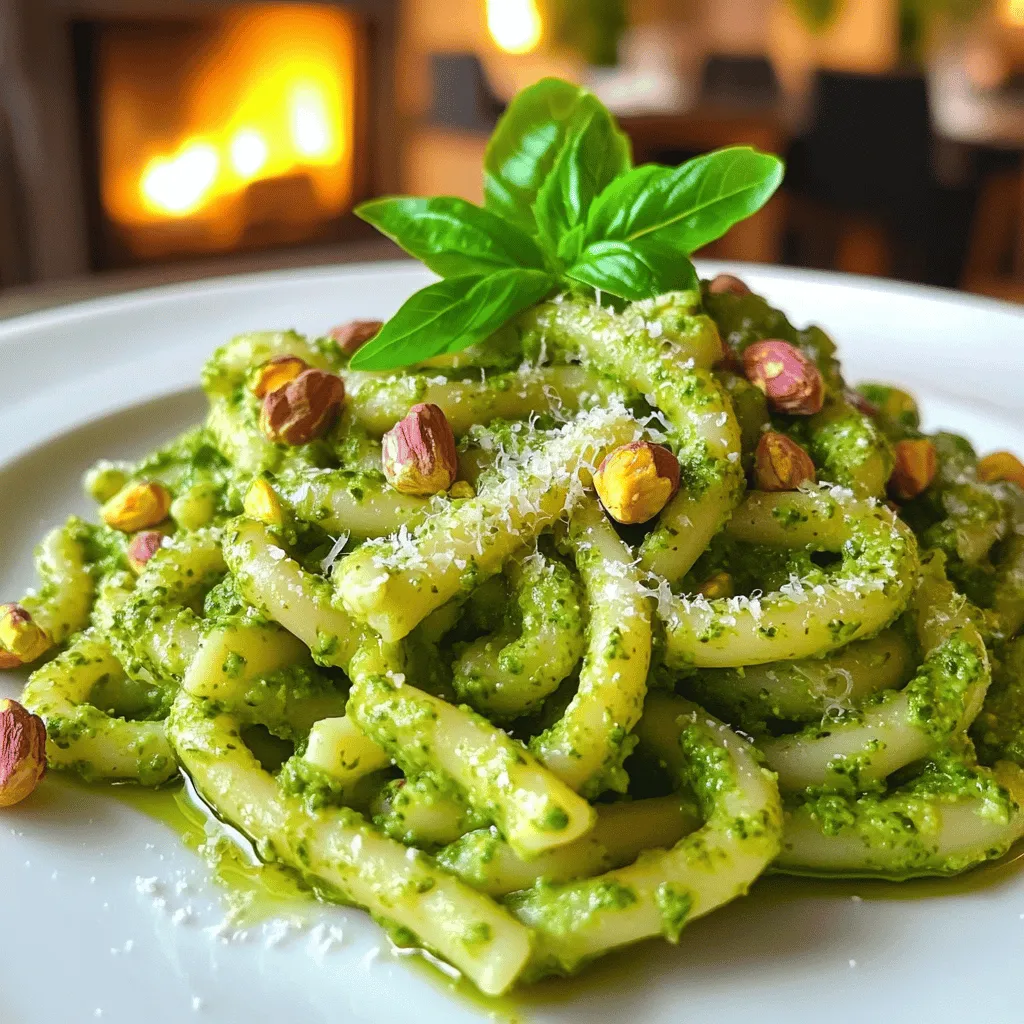
What Is the Cultural Significance of Pesto in Italian Cuisine?
Pesto is a beloved sauce in Italian cuisine. It comes from the region of Liguria. The word “pesto” means to crush or pound, which reflects how it is made. Traditionally, people made it with a mortar and pestle. They crushed fresh basil, garlic, pine nuts, cheese, and olive oil together. This method gives pesto its rich flavor and unique texture.
Over time, pesto has evolved. Today, you can find many types, like pistachio pesto. This version adds a twist with a nutty flavor. It fits perfectly in modern Italian cooking. Chefs now experiment with different nuts and herbs. They create new flavors while keeping the essence of traditional pesto.
Pesto enhances many classic Italian dishes. You can mix it with pasta, spread it on bread, or use it in salads. It adds a burst of flavor to simple meals. You can even drizzle it on grilled meats or veggies. This versatility makes pesto a staple in both home kitchens and restaurants.
Pesto is not just food; it represents Italian culture. It shows how simple ingredients can create something special. By using fresh, local ingredients, we honor Italian traditions. This connection to the land and its flavors is key to Italian cuisine.
If you want to try making a delicious dish with this classic sauce, check out the Full Recipe for Pâtes au Pesto de Pistache.
How Can You Store and Preserve Pesto for Future Use?
Homemade pesto shines with fresh flavors. To store it, place it in an airtight jar. Pour a thin layer of olive oil on top to seal it. This oil layer keeps air out and helps prevent browning. You can store pesto in the fridge for up to one week.
For longer storage, freeze your pesto. Ice cube trays work great here. Fill each space with pesto and freeze. Once solid, pop the cubes into a bag. This way, you grab a cube when you need a quick meal.
When buying store-bought pesto, check the label. Look for natural ingredients without preservatives. A good option should have a short shelf life. Fresh pesto usually tastes better than older jars.
To keep your pesto creamy, use fresh ingredients. A little lemon juice adds brightness and helps preserve the color. Avoid over-blending; this can make the texture gritty. Instead, pulse just until combined for a nice, creamy finish.
For more detailed steps and tips, check the Full Recipe. Enjoy your cooking!
Pâtes au Pesto de Pistache blends flavor and texture for a delightful meal. We explored key ingredients, from pasta types to fresh additions. I shared a step-by-step guide for sauce and perfect pasta. We also looked at fun variations and serving ideas. Pesto holds a rich history in Italian cooking, too. With these tips, you can create a tasty dish or adapt it for quick meals. Enjoy exploring new flavors while making this classic recipe your own.
